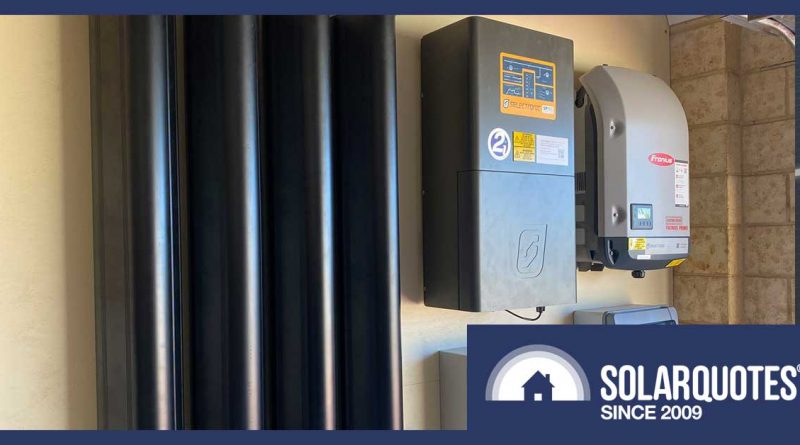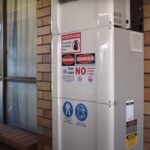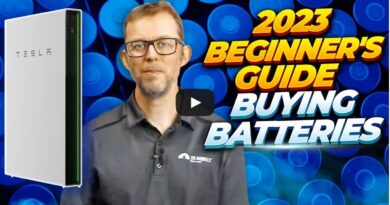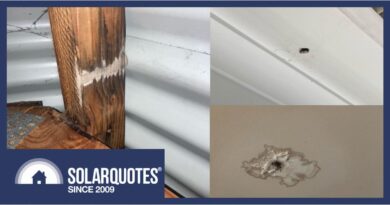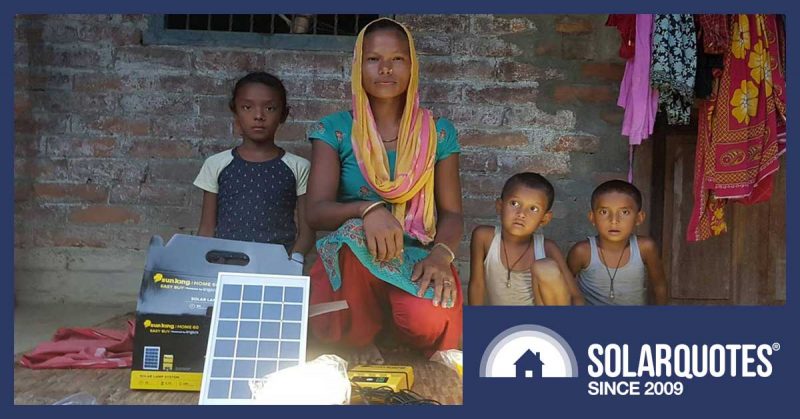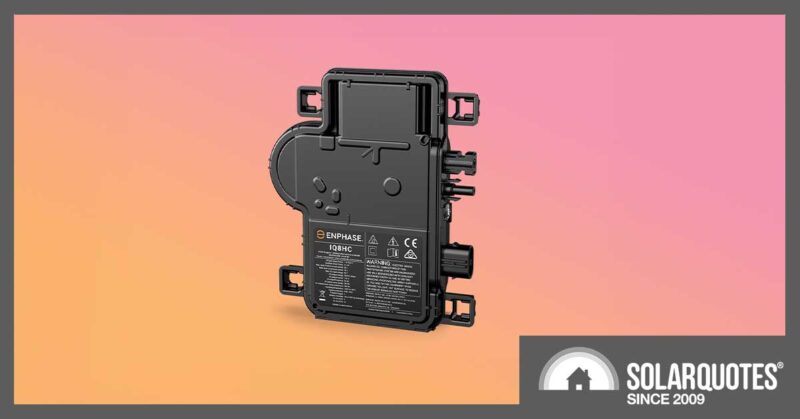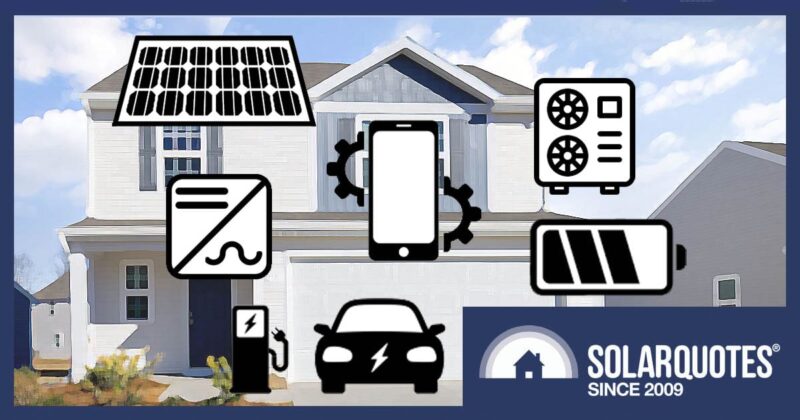Check Out This Novel Zenaji Battery Installation in WA
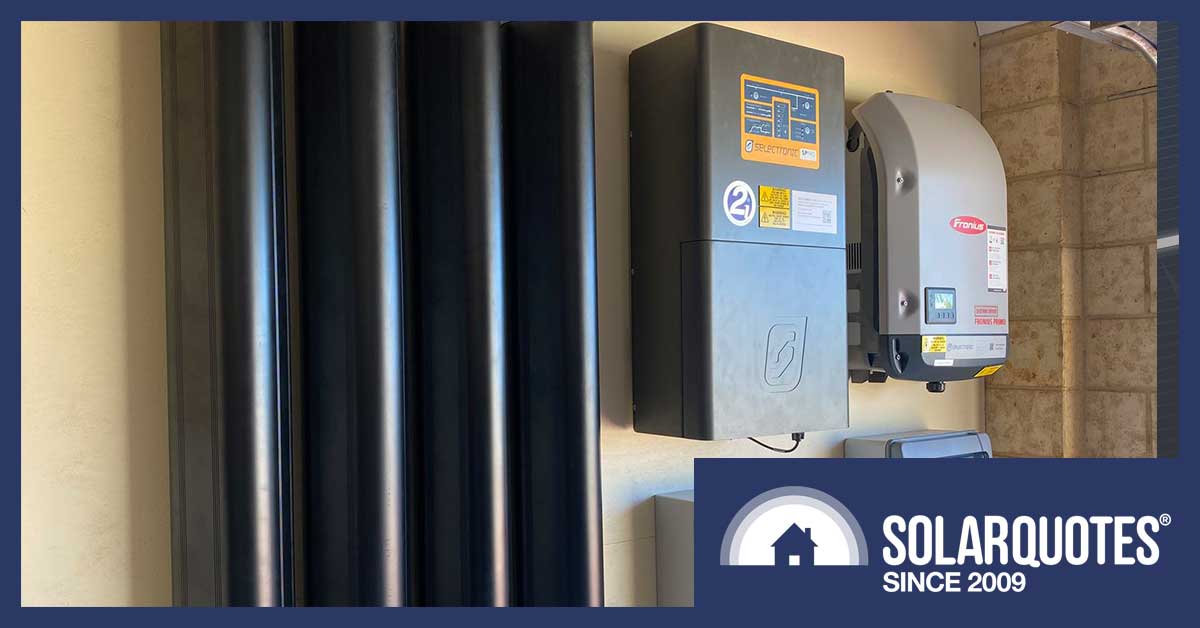
Jason’s garage in Geraldton. Those funky looking black tubes are 4 x 1.93 kWh Zenaji batteries.
Jason Bertelsen isn’t a name in the renewables sector – he’s a customer. However, his story, in particular his decision to put money into Zenaji batteries, intrigued us enough to get in touch for an interview.
Why? Zenaji batteries are relatively unknown in the Australian market. They don’t use lead-acid or conventional lithium-ion chemistries that currently dominate the home energy storage scene. They use Lithium Titanate chemistry that the company claims offers 22,000 charge cycles and fast charging (according to Wikipedia, this comes at the cost of lower energy density).
Jason told us his choice came after years of wanting to add a battery to his solar power system.
“Every time I looked at the problem, there wasn’t a solution I liked,” he said.
About Tesla Powerwall batteries, he said:
“I wasn’t really happy with the lifespan, the guarantee of only a certain amount of cycles. You’ll never really get the return on investment – that was really a factor.”
He was also unhappy with the loads the Tesla batteries could handle, because he wanted something that would be “rock-solid” for anything he throws at it.
“We don’t really use a huge amount of electricity, because there’s only two of us”, he said – “but nobody likes surprises simply because they ran too many appliances at once!”
Another feature of the Zenaji batteries that brought him over the line is their 20-year warranty. With that in mind, and with a 7-year-old 2.4kW solar system that was due for an upgrade, the time was right to make the jump.
“I did more and more research, I had a chat to the company, and I was ready to go.”
The Geraldton, Western Australia resident’s installation was undertaken by local company BTM Energy, and as Jason said on Facebook, the install ran at a leisurely pace and took four months to complete.
As he explained to us, he started by going down the Solar Analytics road, and the long install cycle meant he had the chance to gather data to compare his old system to the new at every stage of the process.
Jason said BTM Energy was the only installer he spoke to that was prepared to work with a battery provider (and chemistry) that was brand-new to them.
“When I showed them the Zenaji batteries, the owner of BTM went and bought some – so they ironed out the kinks of an install at the boss’s house. That made my install run very smoothly!”
“I’ve always wanted to be a bit more energy-independent – I didn’t want to disconnect from the grid entirely. I wanted the feed-in tariffs, and the sharing arrangements.”
His system comprises:
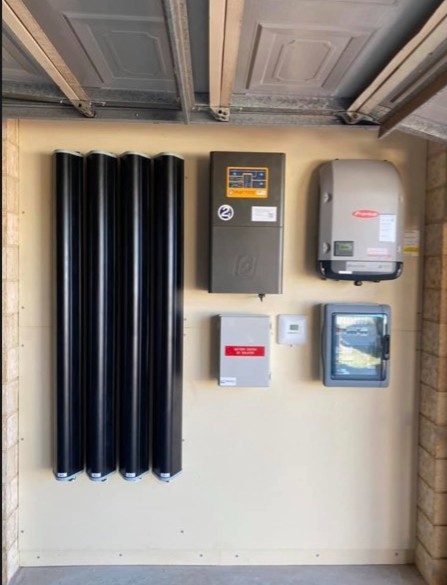
The Zenaji batteries are installed in a garage, alongside the inverters.
The Selectronic inverter is set up to disconnect from the grid and create a local microgrid in the event Western Power has an outage, and the Fronius inverter is certified to work with the Selectronic.
“When we first got started, we had an idea of what we wanted to do – it wasn’t a step that was ‘needed’ but I wanted to know what was happening, so we put Solar Analytics on, to get readings of what the house was doing before we upgraded.”
That provided useful information, such as a misconfiguration in their solar hot water system.
“It’s great, but we don’t like having cold showers in this house – so we would tend to leave the booster running pretty much all the time. It chews some electricity if it comes on at the wrong time of the day, which it was!”
On many days, the booster would start at 4am or 5am, meaning the water was nice and hot for the shower but at that hour it would be coming either from the grid or the batteries.
To take care of that, BTM Energy installed a relay to control the hot water service.
“When the Selectronic detects there is enough solar coming in, that’s when the hot water starts heating, as soon as it’s the right time of morning. Only occasionally does it need any extra, and that’s restricted to certain times of the day.”
As well as the long warranty, Jason told us he was pleased by the design of the Zenaji batteries, saying they’re “neat and don’t take up huge amounts of space.”
SolarQuotes founder Finn Peacock, a dedicated reader of specifications, wanted to know whether Jason was comfortable that his Zenaji battery warranty would survive Geraldton’s heat.
The warranty is in this PDF, and what attracted Finn’s attention is reductions in warranty life if the Zenaji batteries are cycled on days that fall outside its rated temperature of 5-35℃. For example, if the battery is cycled on a day where the temperature is over 40℃, the warranty reduces by five days.
“These are installed in my garage. It’s all shaded, and the garage doesn’t get too hot, so I wouldn’t think the batteries are going to get too warm. And the Selectronic needs to be indoors.”
And there’s another way to protect the warranty in the case of these batteries: if the ambient temperature is going to be out-of-spec, make sure you don’t cycle the batteries!
If you’re interested in this intriguing Zenaji battery installation you can follow Jason’s journey here.
Original Source: https://www.solarquotes.com.au/blog/zenaji-battery-install/

